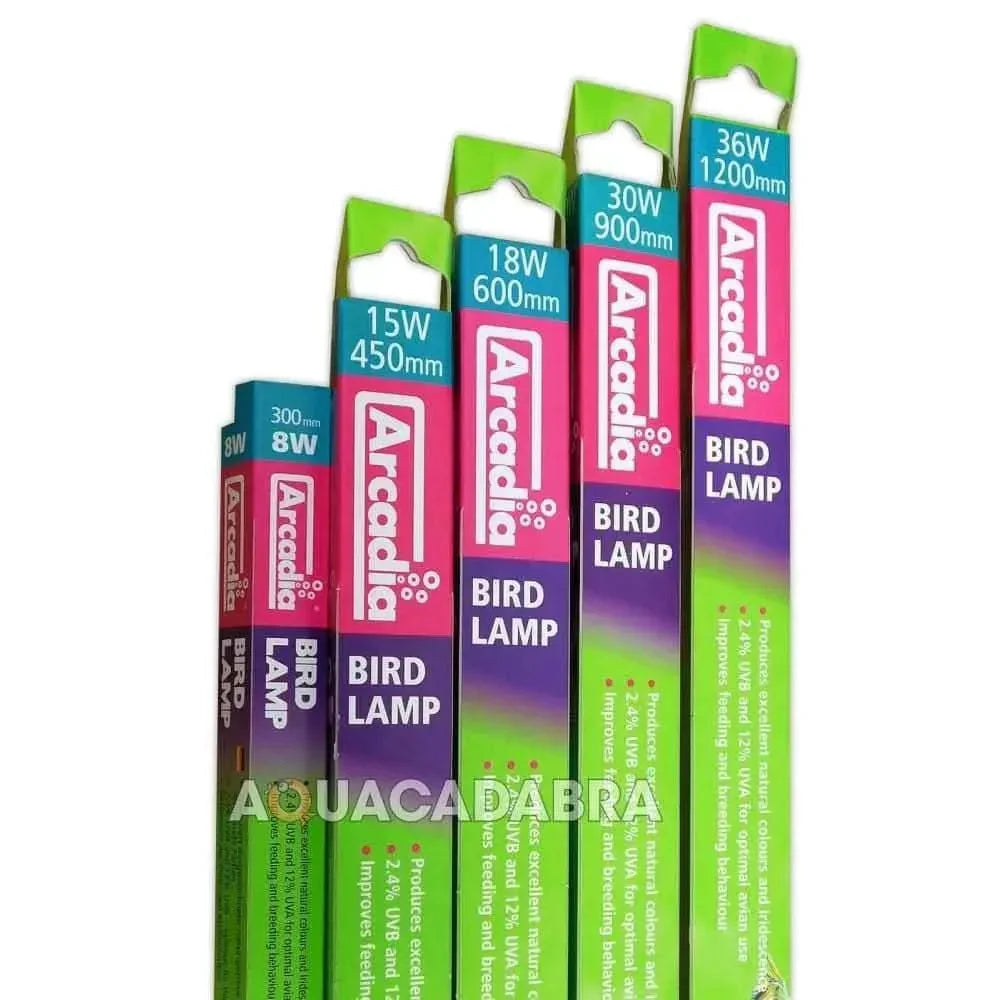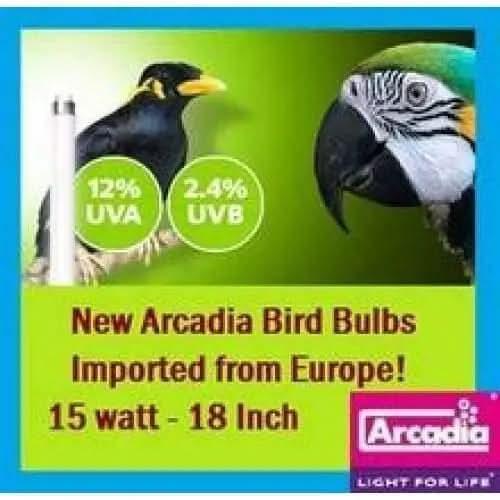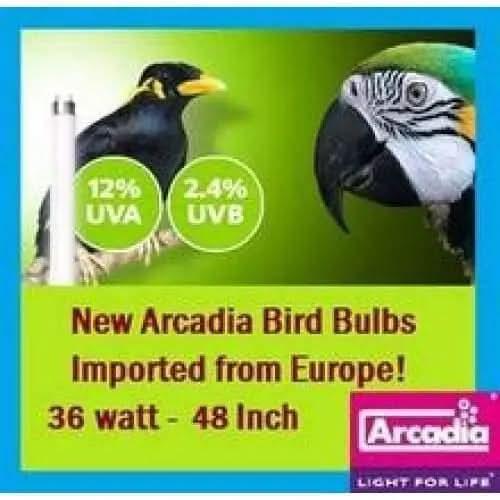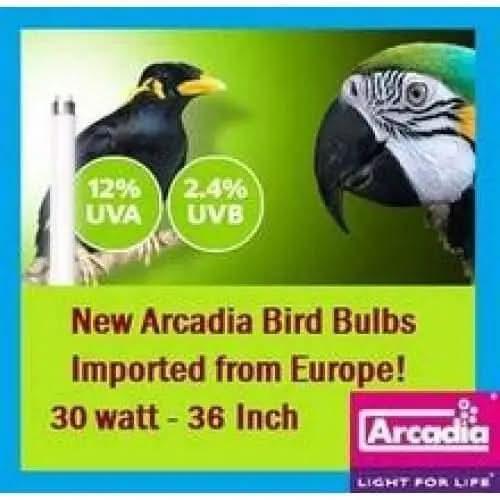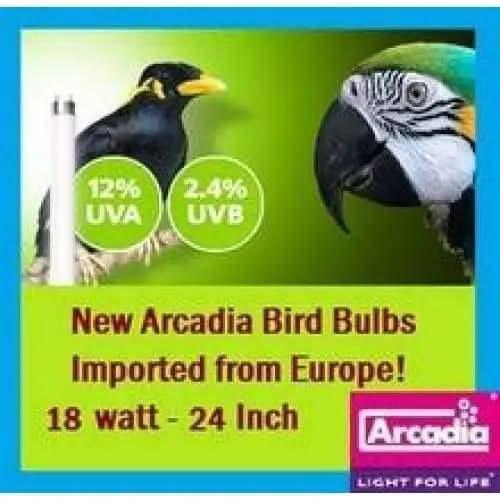Arcadia Bird Lamp T8 UVB Fluorescent UV Light for Birds
- Sku: TARC16402S
- Vendor: Arcadia bird
UV Light for Birds
The Arcadia Bird Lamp t8 has been developed in order to provide an artificial source of ultraviolet (UV) light, which is essential to captive birds denied exposure to direct sunlight. The use of an Arcadia Bird Lamp T8 source that mimics the natural UV content of sunlight has recognised health benefits and provides birds with a more natural view of their surroundings, encouraging natural behaviour and in many cases improved breeding results. Unlike normal fluorescent lamps, the Arcadia Bird Lamp T8 uses special UV emitting phosphors to replicate the spectral pattern of sunlight with 12% of the total light output emitted as UV-A and 2.4% UV-B. • Recreates UV exposure for domestic birds • Promotes vitamin synthesis • Restores natural vision • Arcadia Bird Lamp T8 Available in linear form for aviaries and bird rooms WHY DO BIRDS LIGHTING?… Unlike humans, birds can see the ultraviolet (UV) light that is a component of natural sunlight. In birds, UV light influences behaviour such as reproduction and feeding – for a birdlife without UV would be the equivalent of humans seeing everything in black and white. A bird kept inside may well be deprived of UV light. Sunlight passing through a window has most of its UV component filtered out by the glass, and normal domestic light sources do not emit UV. Where a bird is not kept outside, lighting that includes the UV spectrum should be provided. Note: Linear bird lamps are designed for use in light fixtures with high-frequency ballasts - do not use fittings with a diffuser in front of the lamp unless it specifically states it is UV transmissive, as this will block the UV content of the Arcadia Bird Lamp T8. Note: Linear bird lamps are designed for use in light fixtures with high-frequency ballasts - do not use fittings with a diffuser in front of the lamp unless it specifically states it is UV transmissive, as this will block the UV content of the lamp. Note: Linear bird lamps are designed for use in light fixtures with high-frequency ballasts - do not use fittings with a diffuser in front of the lamp unless it specifically states it is UV transmissive, as this will block the UV content of the lamp. Vitamin D3 synthesis Vitamin D3 is required by birds for healthy bone development. Many species can synthesize vitamin D3 from sunlight through their skin. Specifically, it is the UVB light within the spectrum that enables D3 synthesis. As birds are covered in feathers, they are unable to use their skin in this way. In most birds, the preen gland collects the precursor D3 from the bloodstream and concentrates it in the gland oils. These are then exposed to UVB light by the bird spreading the gland oils on to its feathers during preening. The bird then ingests the UV exposed material when it preens itself again, and oil enters the body as vitamin D. The liver and kidney then convert this to vitamin D3. Vision The retina of the eye contains cones, which, when stimulated by different wavelengths of light, transmit colour information to the brain. In the human eye, there are three types of cones, enabling us to perceive three primary colours: red, green and blue. This is known as trichromatic vision, the combination of these colours enables us to perceive thousands of different colours. Birds have a fourth cone, which is sensitive to UV light and can perceive four primary colours, the additional colour being UV. This is known as tetrachromatic vision. In humans, UV light is unable to pass through the lens of the eye, but the bird has no such limitation. The latest research has discovered that some birds can even see five primary colours (i.e. have pentachromatic vision), being able to differentiate between two different wavelengths of UV. Feeding UV perception plays a significant role in the selective intake of food. Ripe fruit and berries appear a different colour to a bird and pollinating flowers often UV reflections, assisting the bird to home in. What a bird sees affects its appetite. Reds are redder and greens greener with UV. A reluctant feeder may need UVA light to stimulate its appetite. Behaviour Without a balanced source of light, the neuroendocrine cycle (light to the pituitary and pineal gland) is affected. This affects every aspect of a bird’s life resulting in agitation, picking behaviours, weakness, breeding problems, and metabolic disorders. Breeding Birds’ feathers reflect UV Lamp and this reflection of the plumage plays a role in the sexual selection of birds. As birds are able to distinguish UV light as a separate colour or colours, the UV component in daylight can radically alter their visual perception of another bird. Birds such as mynah birds that appear black to the human eye will appear multicoloured to the avian eye. In some species, birds require light in the UV wavelengths in order to differentiate between the sexes.
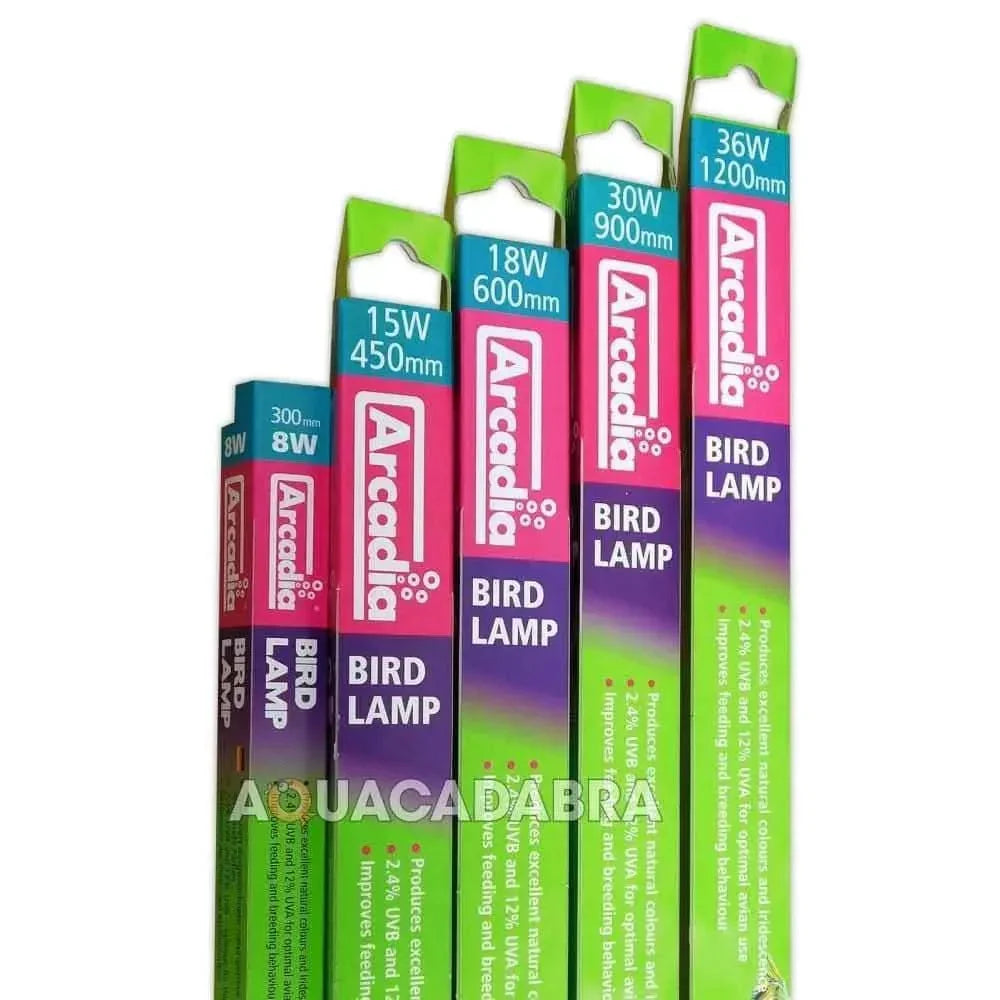
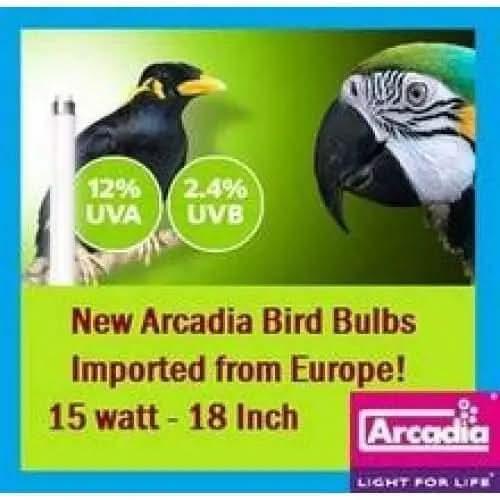
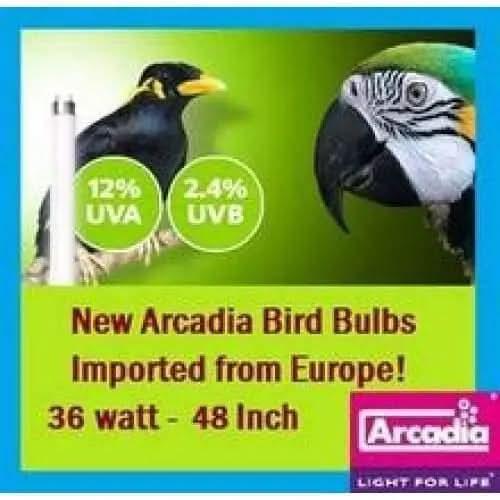
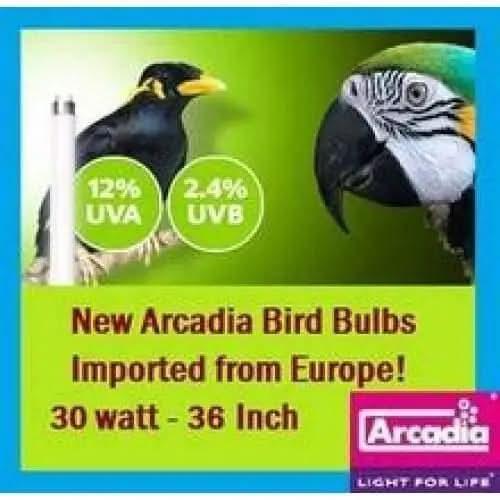
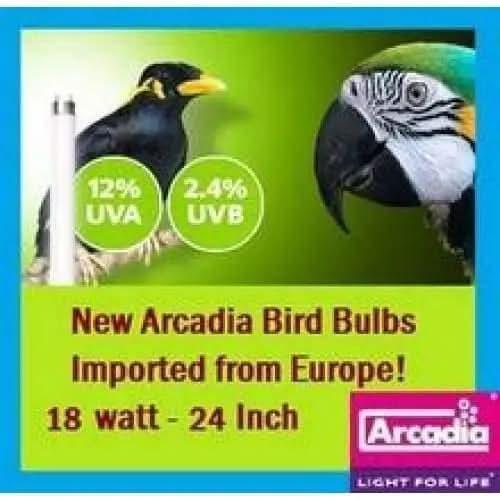
Arcadia Bird Lamp T8 UVB Fluorescent UV Light for Birds


